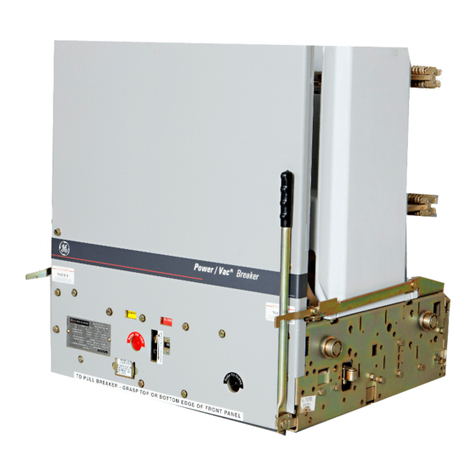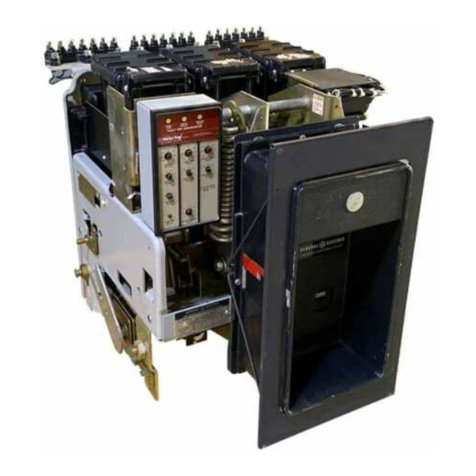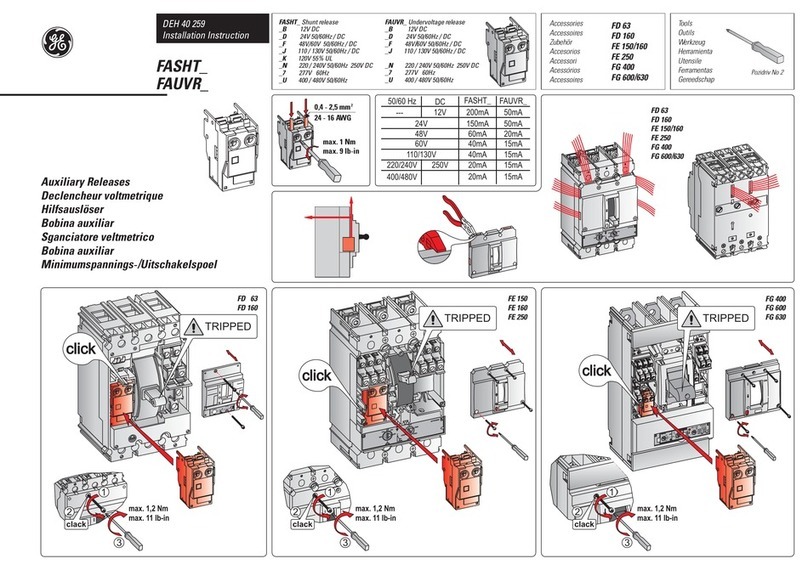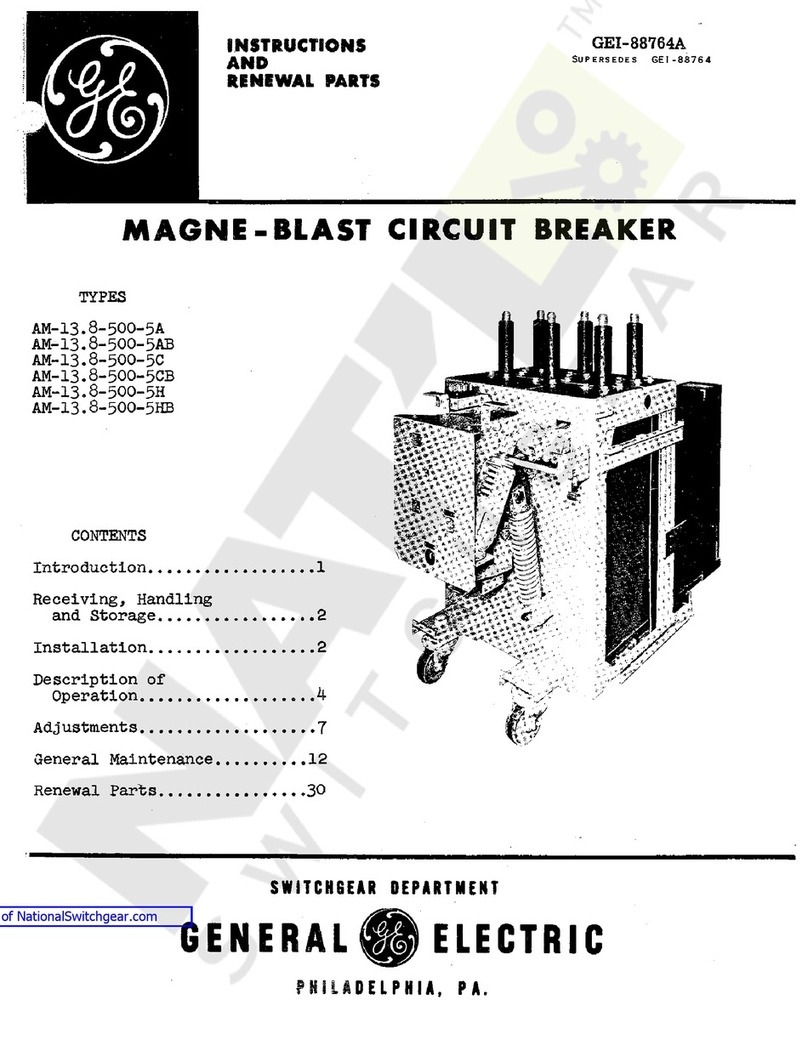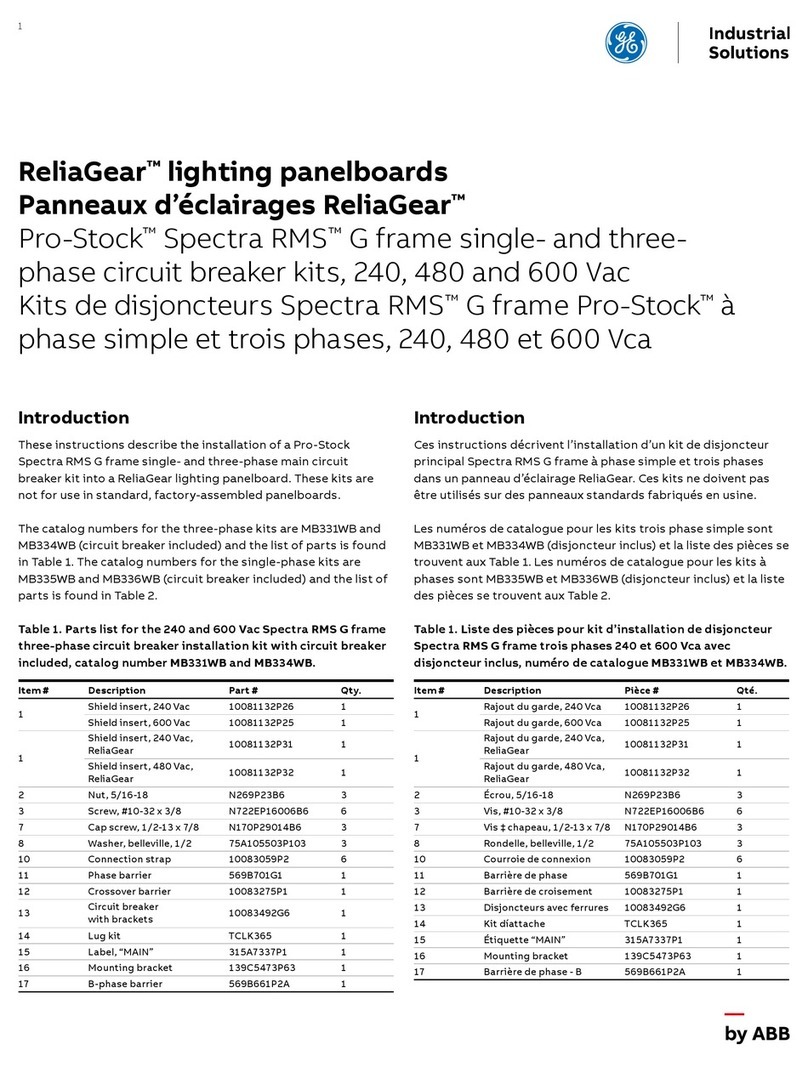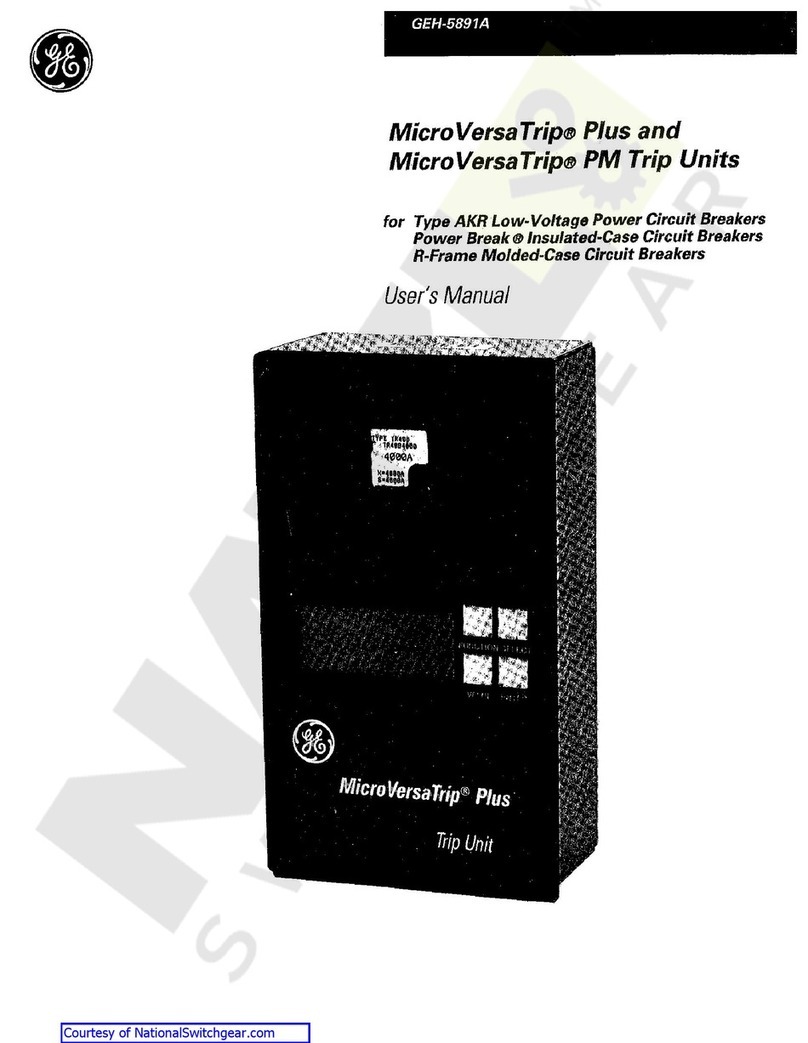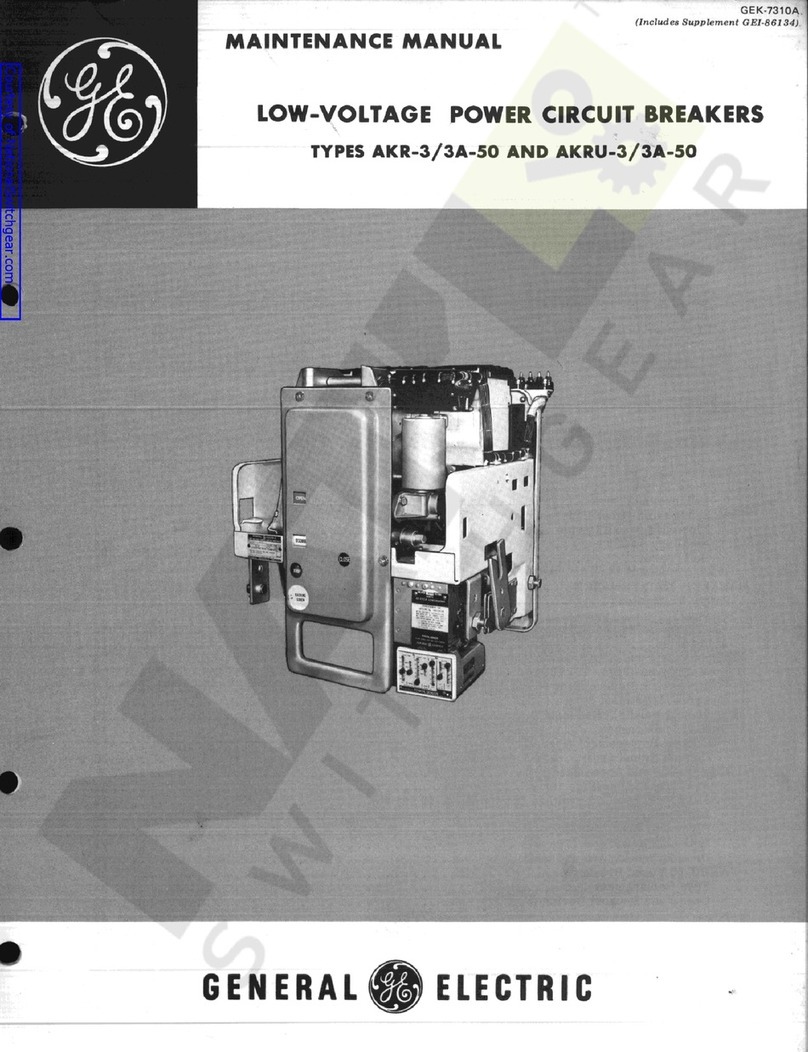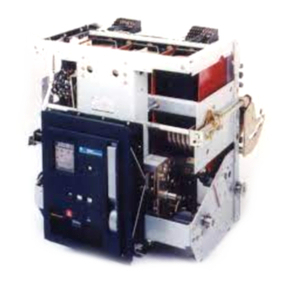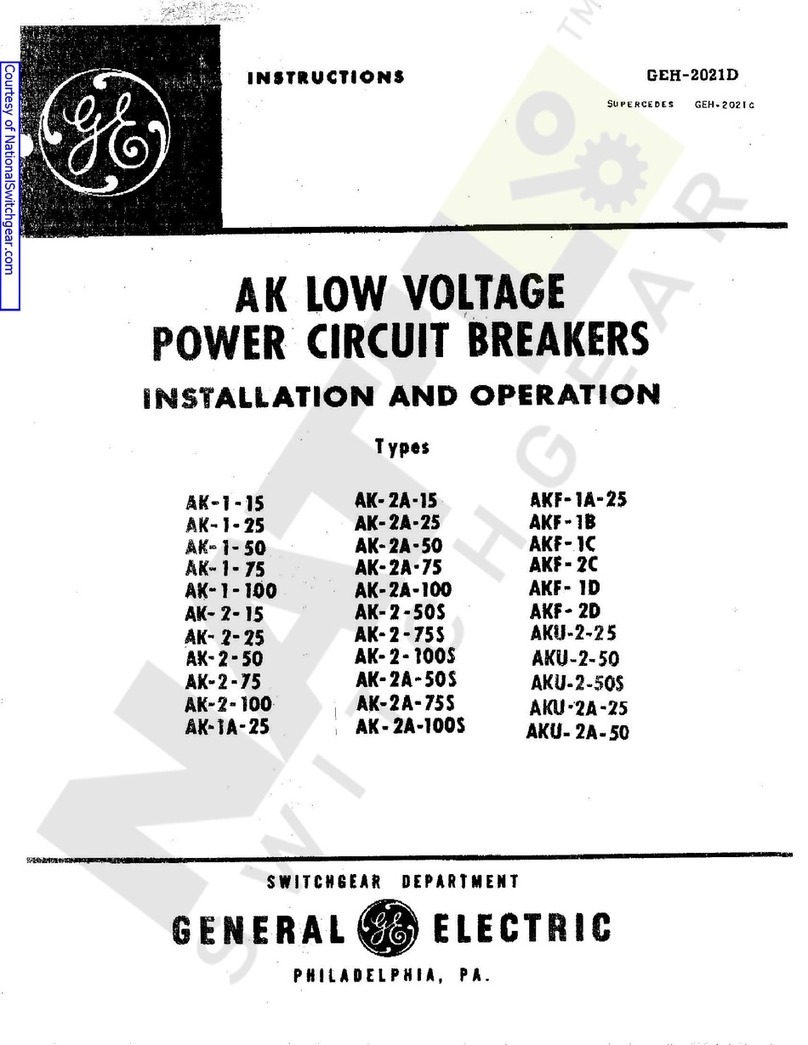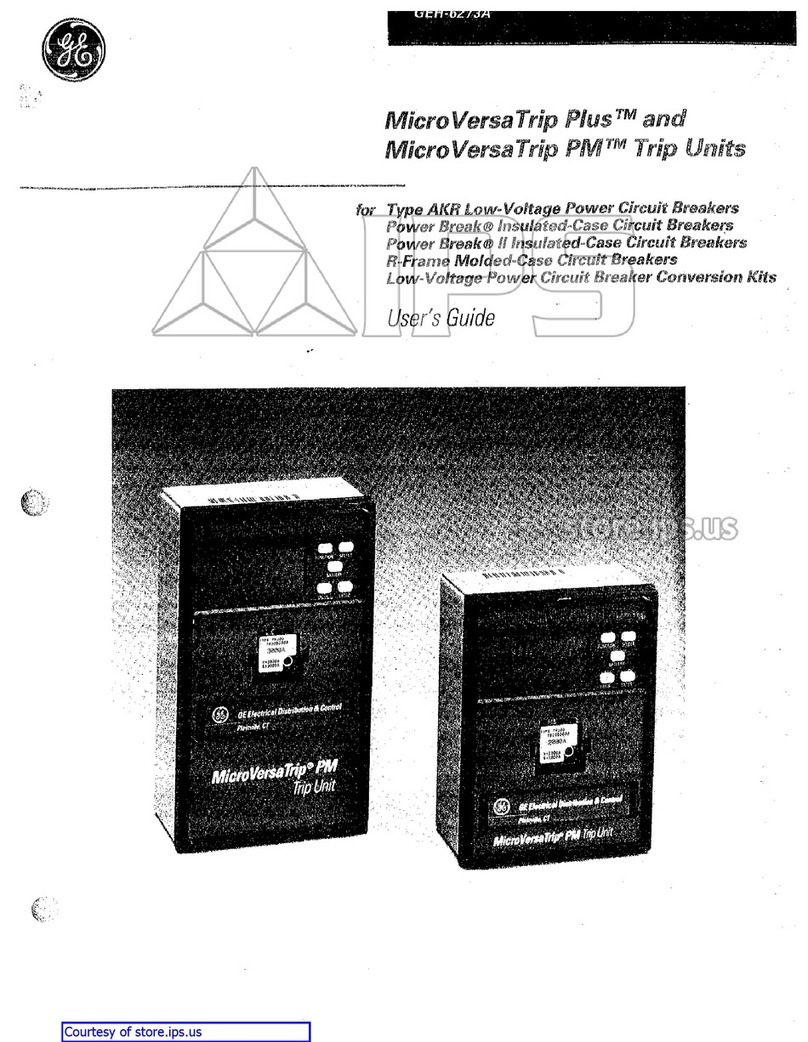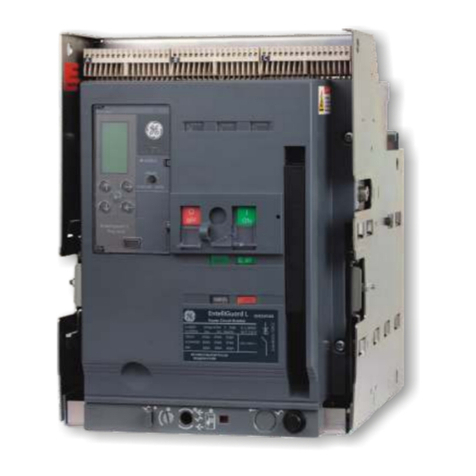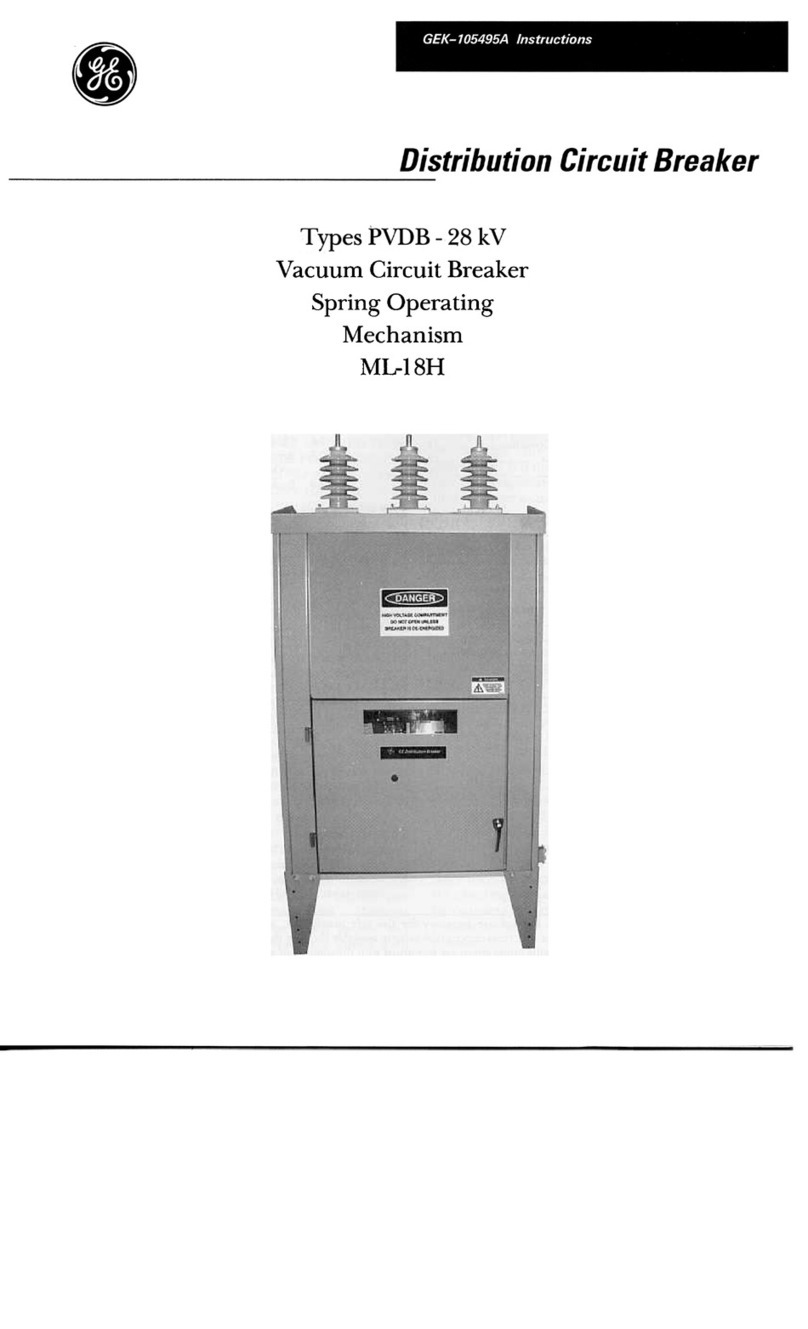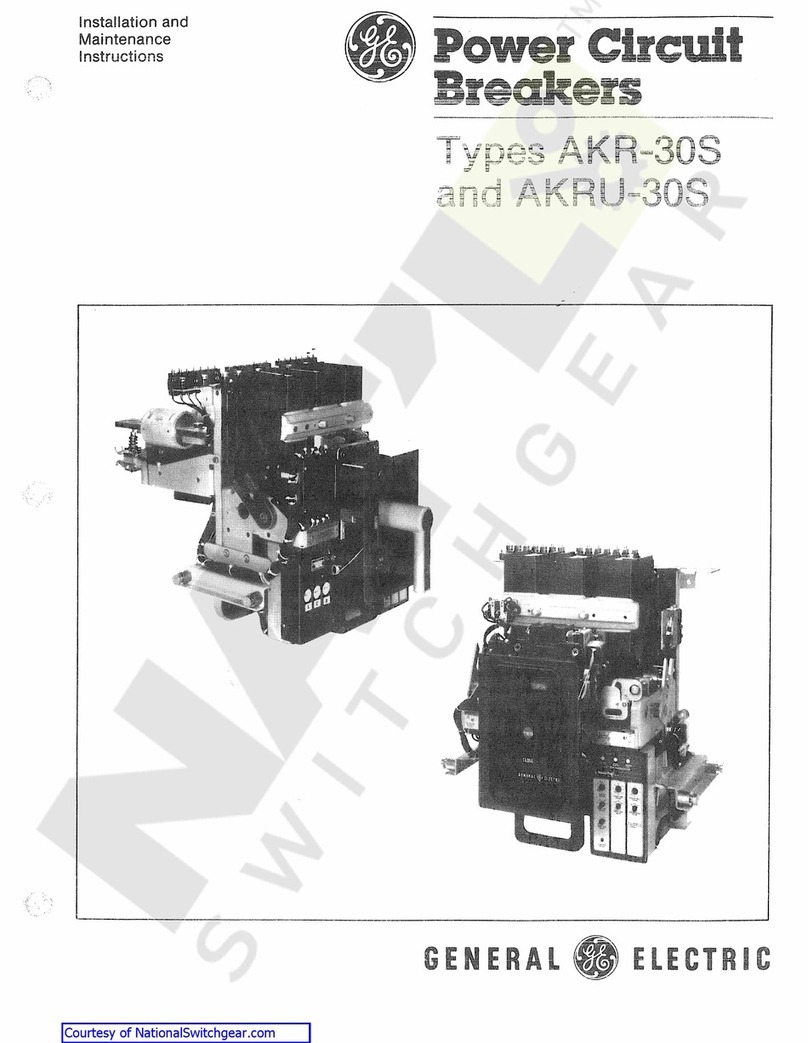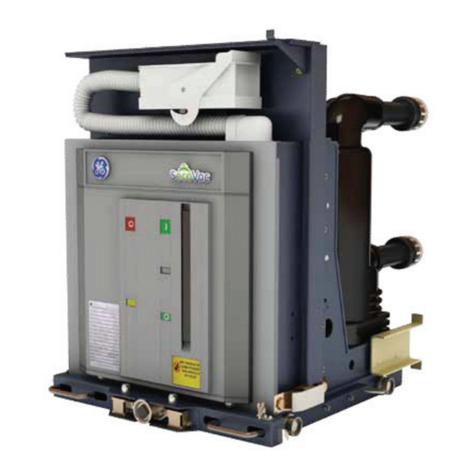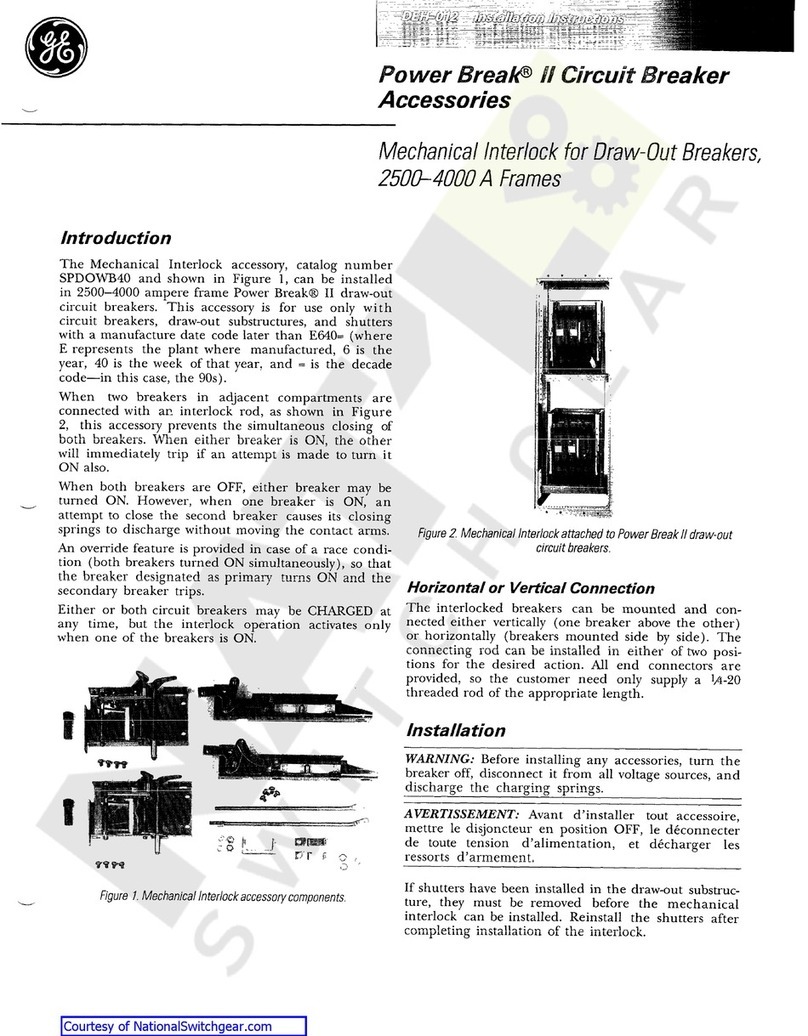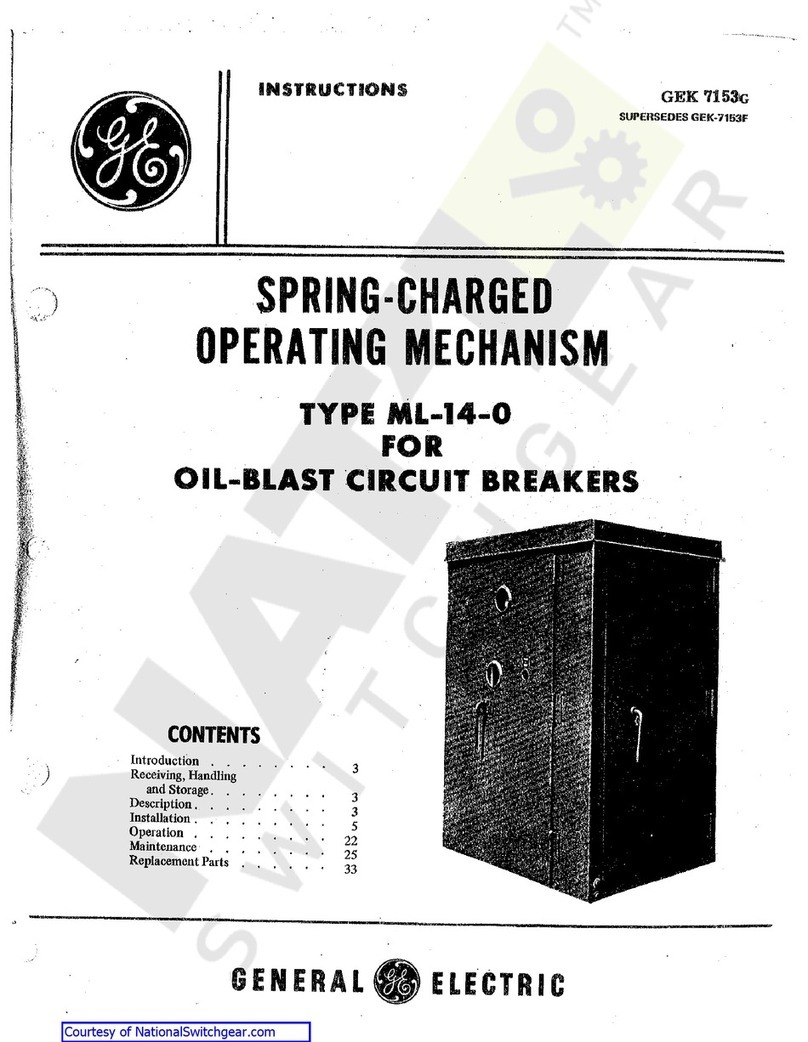
7
EntelliGuard G Power Circuit Breaker
Section 3. EntelliGuard®TU Trip Unit System
The EntelliGuard TU Trip Unit offers optimum circuit
protection and optimum system reliability simulta-
neously with little or no compromise to either of
these critical functions. Reliability and safety, in
one package, at the same time, all the time.
EntelliGuard TU series trip units are available as
the standard controller for new production
EntelliGuard G ANSI/UL 1066, UL 489 and IEC circuit
breakers. EntelliGuard TU designs are also available
as direct, functional replacements for GE’s
PowerBreak®,Power Break II, WavePro®and AKR
circuit breakers. New on-board features and
communications capabilities enable equipment
enhancements, improved operational performance
and life extension programs. Performance will
vary based on associated circuit breaker and
equipment conditions.
This section describes the functions as implemented
in the EntelliGuard G UL 489 and ANSI/UL 1066 circuit
breakers. References or comparisons to other GE
circuit breakers are for informational purposes only.
Reliability without Compromising Safety
Reliable protection of circuits and equipment has
always been the circuit breaker’s primary mission.
Providing appropriate protection of the conductors,
while preserving selectivecoordination, has been
the the primary focus of most system designers.
However, what was acceptable in the past is no
longer the standardtoday.
Modern economic reality, coupled with strict
regulatory requirements, demand optimal system
performance with increased sensitivity to the
inherent power system hazards that face operating
and maintenance personnel. Safety agencies, local
authorities and owner-operators demand better
personnel protection and state-of-the-artcapabilities
to to minimize hazards while simultaneously
preserving critical loads and system capabilities.
These requirements often seem to be, and some-
times are, in conflict, pitting the speed and
sensitivity required to improve safety against the
delays and deliberate decision making required to
maximize power system reliability. The EntelliGuard
TU,along with the EntelliGuardfamily of circuit
breakers, offers flexible solutions for demanding
circuit protection and circuit preservation environ-
ments. The EntelliGuard TU is designed to provide
the utmost in system protection and reliability
simultaneously, with little or no compromise.
Arc Flash and the Entelliguard TU Trip Unit
Reducing arc flash hazard is a primary concern in
many power system designs. The best way to
ensure the lowest possible hazard for a particular
distribution system is to consider the hazard as
the system is designed and make careful selection
of the system’s topology, circuit sizes, equipment
sizes and protective devices to minimize hazard
for the operating and maintenance personnel that
will need to use the system for years to come.
The EntelliGuard TU trip unit, especially in con-
junction with the EntelliGuard G circuit breaker,
provides significant flexibility towards solving arc
flash hazard problems without excessive sacrifice
of system reliability, in terms of selectivity.
One way to lower potential incident energy is to
ensure that circuit breakers are able to interrupt
using their Instantaneous trips for all expected
arcing faults. Figure3.1 shows the expected arc-
ing currents for 480-volt systems for various arc
gaps representativeof switchgear (32mm), switch-
boards (25mm), MCCs (25mm) and panelboards
(13 mm). These values were determined using IEEE
standard 1548, Guide for Performing Arc-Flash
HazardCalculations, 2002.
Figure 3.1 demonstrates the wide range of possible
arcing currents predicted by the IEEE standard’s
calculations. The actual range of arcing currents
may be larger when consideration is given to the
potential error in shortcircuit calculations, fault
current data provided by the utility company, and
variance in the actual arcing gap or enclosure’s
geometry where the arc occurs. Of particular con-
cern should be the lower end of the possible range
of current that may fall below the Instantaneous
pick up of a circuit breaker or the current limiting
threshold of a fuse. Dangerous incident energy
may quickly increase when interruption time
increases from a few cycles to a few seconds,
even for the low arcing current.
Courtesy of NationalSwitchgear.com
